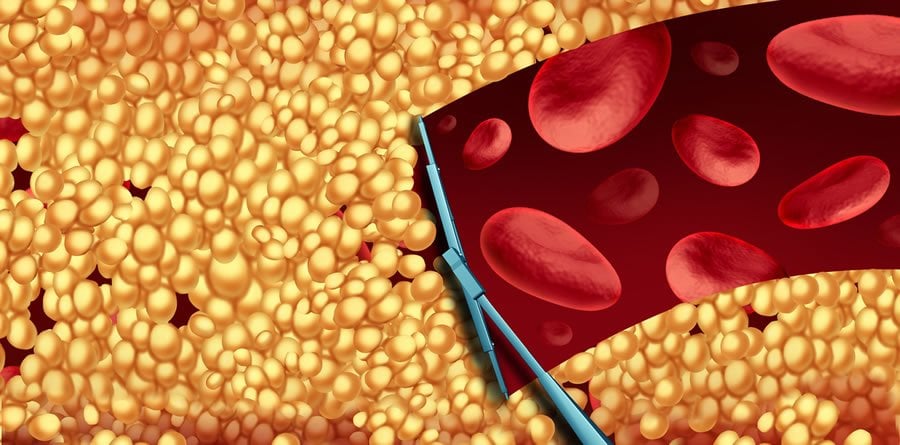Statins, Diabetes, Diet, and the “Tony Roma” Effect
“Pills are merely a band aid,” points out Kimberly Gomer, Director of Nutrition at the Pritikin Center. “A healthy lifestyle goes after the underlying cause of the disease, and fixes it.”

Statins and Diabetes
Recent research1 from the University of Queensland in Australia followed more than 8,000 women for 10 years. At the beginning of the study, none had diabetes. All were in their 70s or 80s.
Over this 10-year period, nearly 50% of the women had filled a prescription for statins. The researchers found that they were hit with a 33% higher chance of developing type 2 diabetes compared to the women not taking statins.
What’s more, the risk of getting diabetes rose to more than 50% among women taking higher doses of statins.
More Statins, More Diabetes
“That was most worrisome,” states lead author Dr. Mark Jones. “We found a ‘dose effect’ where the risk of diabetes increased as the dosage of statins increased.”

Their study, wrote Dr. Jones and colleagues, suggests that “elderly women should not be exposed to higher doses of statins.” Also, careful monitoring of glucose levels is needed for “appropriate management of this potential adverse effect.”
In fact, “consideration should be given to de-prescribing of statins.”
“… the tip of the iceberg”
This is hardly the first time that scientists have detected a link between statins and type 2 diabetes. In 2011, analyzing more than 170,000 people from 76 trials, researchers discovered a 9% increased odds of diabetes among statin users.2
In an accompanying editorial3 on statin-induced diabetes, authors Mark Goldstein and L. Mascitelli wrote, “Perhaps it’s the tip of the iceberg.”
In another meta-analysis4 of more than 90,000 people, scientists from the University of Glasgow in the United Kingdom found an overall 9% increased risk of diabetes.
And following nearly 162,000 women aged 50 to 79 years, a study5 led by researchers from Mayo Clinic found that statin use was associated with a 48% increased risk for diabetes.

Learn More About Pritikin
How Might Statins Spur the Development of Type 2 Diabetes?
At this point, scientists aren’t sure. But a recent study6 at the University of Eastern Finland provides strong clues. Tracking more than 8,000 men ages 47 to 73 for six years, the researchers reported that statin treatment increased the risk of type 2 diabetes by 46%. It was attributable, they concluded, “to decreases in insulin sensitivity and insulin secretion.”
The “Tony Roma Pill”
Another reason may be what doctors at the Pritikin Longevity Center in the early 1990s called “the Tony Roma pill.” Statin prescriptions were new at the time, and popular in part because “some people thought that taking statins meant they could go to restaurants like Tony Roma’s every night and eat all the steak and ribs they wanted,” recalls Dr. Stephen Inkeles, for many years a physician and educator at Pritikin.

“Well, that didn’t work out too well. Often, our steak-eating guests ended up with higher cholesterol levels despite their statin prescriptions.”
“Is There Gluttony in the Time of Statins?”
Recent data have affirmed this “Tony Roma-style” behavior.
In a 2014 study7 titled, “Is There Gluttony in the Time of Statins?” scientists from UCLA followed roughly 28,000 U.S. adults for more than a decade. They found that calorie intake increased by 10% and fat intake by 14% among statin users. Among those not taking statins, calorie and fat intake remained essentially the same.
Reemphasizing Diet
Also, wrote lead author Dr. Takehiro Sugiyama and colleagues, the statin users gained more weight. “The increase of BMI [body mass index] was faster for statin-users than for non-users. The importance of dietary composition may need to be reemphasized for statin-users.”
Dietary composition has always been emphasized at the Pritikin Longevity Center, which has taught healthy-living skills since 1975. The Pritikin Eating Plan focuses on fresh, whole foods that are fiber-rich and naturally low in salt, sugar, and fat, such as fruits, vegetables, whole grains, legumes like beans, as well as moderate amounts of nonfat dairy foods, fish, and lean meat.
Exercise
Diet may not be the only thing that takes a dive when statins enter the picture. In a 2016 study8 that compared the physical activity levels of more than 2,600 people from South Korea, all of whom had been diagnosed with high cholesterol levels, physical activity dropped markedly among those who opted to take statins. The non-statin users saw no drop in physical activity.
Muscle Soreness + Poor Diet
“I wonder how much of the decline in physical activity in those taking statins was due to increased muscle soreness, a fairly common side effect of statins,” offers Kimberly Gomer, Director of Nutrition and educator at the Pritikin Longevity Center.
Continues Gomer: “Increased dietary fat and calories coupled with reduced exercise may lead to weight gain and increased insulin resistance, which may certainly lead to increased risk of developing type 2 diabetes.”
Weight, Statins, and Diabetes
But let’s return to our initial study for the moment – the one showing that higher doses of statins led to higher rates of diabetes among women in their 70s and 80s. In this study, an analysis of BMIs was done. Interestingly, there was little difference in diabetes risk among those who were normal weight or overweight versus those who were obese.
“This tells me, yet again, that we need to stop ‘biasing by BMI,’” notes Dr. Tom Rifai, Regional Medical Director of Metabolic Health & Weight Management at Henry Ford Health System in Michigan, and member of the Pritikin Scientific Advisory Board.

“In other words, just because someone’s weight is low does not mean they’re healthy. And just because someone’s weight is high does not automatically mean we know exactly how elevated their disease risk is based on their weight alone.”
Thin On the Outside, Fat On the Inside
In fact, some of the highest mortality risk is among elderly people who are of normal weight but have a condition called normal-weight, obesity-related sarcopenia. It means, essentially, that their body’s ratio of fat to muscle is very high. More colloquially, they’re known as TOFIs (Thin on the Outside, Fat on the Inside.)
“The added insult of a statin on top of these ‘skinny fat’ people’s already established high cardiometabolic and frailty risk just adds insult to injury,” asserts Dr. Rifai.
He’s all too aware of this scenario among his own patients, especially a 70-year-old, about-to-retire, “wonderful lady who was definitely skinny-fat.” Within just three months of being on a modest-dose statin, her A1C shot up from 5.8 to 6.4. An A1C level of 6.5 percent or higher on two separate occasions indicates you have diabetes.
Statins, Diabetes, Diet | Bottom Line
Research has consistently shown that statins lower the risk of cardiovascular events. And certainly, that’s a very good thing.
But statins, like all drugs, come with negative side effects. For statins, these effects include muscle pain, neurological challenges like memory loss and confusion, and now, research is finding, increased risk of diabetes.
So what to do?
Focus first and foremost on healthy lifestyle changes, like the diet and exercise program taught at the Pritikin Longevity Center. Science has found that you will likely be rewarded with profound improvements in numerous cardiovascular risk factors.
The Pritikin Program has been documented to:
- Reduce several risk factors9 for coronary artery disease, not only cholesterol but also triglycerides and inflammatory factors like C-reactive protein10
- Reduce blood pressure to normal or near-normal levels, and without the need for medications11
- Lower blood sugar (glucose) in people with diabetes12 and reverse conditions like pre-diabetes and metabolic syndrome13
- Shed excess weight14
Bottom Line: With a healthy lifestyle like Pritikin, you get all the above. And no negative side effects. If you still need medications like statins, chances are you’ll need minimal doses. They’ll be an adjunct to your health, not the main act.
“Unfortunately, current policy in the U.S. calls for maximizing the doses of statins,” points out Gomer. “This latest research from Australia on increasing statin dosages and increasing risk of type 2 diabetes strongly suggests that our health experts need to reconsider their recommendations.
“Instead of maximizing the use of statins, they should establish reasonable blood lipid targets that factor in other cardiovascular risk factors as well as the potential for adverse drug effects from statins that appear much greater at higher doses.”
Nuanced Strategy
This more nuanced strategy, concedes Gomer, “makes it tougher on doctors to determine the best dose, and perhaps the best statin drug choice, for each patient. But we’ve got to do it. The now rather simplistic ‘max-out-the-statin-dose’ approach needs tinkering.”
What doesn’t need tinkering is the basic recommendation by scientists worldwide that we work hard to improve our diet and exercise habits. Thousands of studies over the past few decades are irrefutable: When we eat well and stay active. we tend to live well.
“A healthy lifestyle is likely far more beneficial for many people than relying too much on prescription drugs to treat diseases, such as heart disease, diabetes, and hypertension, that are largely a result of an unhealthy lifestyle,” sums up Gomer.
“Pills are merely a band aid. A healthy lifestyle goes after the underlying cause of the disease, and fixes it.”

Get All the Details of a Stay at the Pritikin Center in Your Inbox
- 1 Drugs & Aging, 2017; 34 (3): 203.
- 2 QJM – Monthly Journal of the Association of Physicians, 2011; 104 (2):109.
- 3 QJM – Monthly Journal of the Association of Physicians, 2011; 104 (2):174.
- 4 The Lancet, 2010; 375, No. 9716: 35.
- 5 Archives of Internal Medicine, 2012; 172(2):144.
- 6 Diabetologia, 2015; 58 (5): 1109.
- 7 JAMA Internal Medicine, 2014; 174(7):1038.
- 8 Korean Journal of Family Medicine, 2016; 37(2):105.
- 9 Archives of Internal Medicine, 1991; 151:1389.
- 10 Journal of Applied Physiology, 2006; 100: 1657.
- 11 Journal of Applied Physiology, 2005; 98: 3.
- 12 Diabetes Care, 1994; 17: 1469.
- 13 Circulation; 2002; 106: 2530.
- 14 Archives of Internal Medicine, 1991; 151:1389.